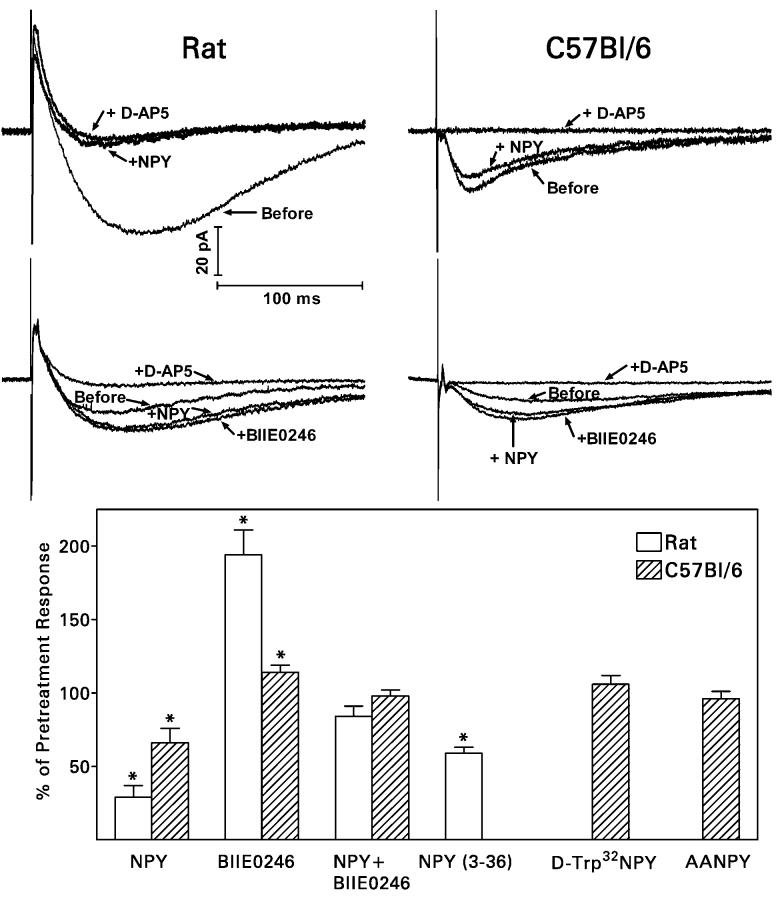Fig. 3.
NPY (1 μM) and BIIE0246 (100 nM) have qualitatively similar, but quantitatively very different, effects on recurrent mossy fiber synaptic transmission in rats and C57Bl/6 mice. Top, Whole cell patch clamp recordings from representative experiments on hippocampal slices are averages of 10 traces. NMDA receptor-mediated recurrent mossy fiber EPSCs were isolated pharmacologically with use of 10 μM NBQX (to block AMPA/kainate receptors) and 30 μM bicuculline (to block GABAA receptors) and recorded at a holding potential of −20 or −30 mV. “Before” refers to responses recorded before exposure of the tissue to NPY or BIIE0246. Upper traces, NPY was added to the superfusion medium and then 50 μM D-AP5 was added in the continued presence of NPY. In slices from both rats and mice, NPY inhibited synaptic transmission and the subsequent addition of D-AP5 abolished the response. The latter result confirms that the response was mediated entirely by the synaptic activation of NMDA receptors. Lower traces, BIIE0246 was added to the superfusion medium and then NPY and NPY + D-AP5 were added in the continued presence of BIIE0246. BIIE0246 enhanced synaptic transmission in both species when it was applied by itself, and the subsequent addition of NPY to the medium had no effect. Bottom, The effects of NPY and BIIE0246 on the peak amplitude of the NMDA receptor-mediated EPSC were much greater in rats than in mice. *P <0.01, paired t-test.

